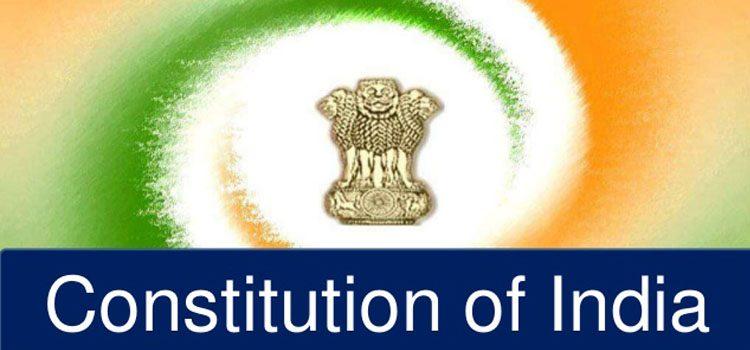The Indian Constitution is the supreme rule-book that has to be followed for the governance of India. During the British rule, the rules were known as Acts, the last one being the Government of India Act 1935. These acts were biased that denied several basic rights to Indian citizens. The Constitution was legally enforced on the eve of Republic Day in January of 1950. B. R. Ambedkar is regarded as its chief architect.
The original Constitution of India was handwritten by Prem Behari Narain Raizada in a flowing italic style with beautiful calligraphy. Each page was beautified and decorated by artists from Shantiniketan. The Indian Constitution is the longest written constitution of any sovereign country in the world with 25 parts containing 448 articles and 12 schedules.
The Indian constitution was adopted on 26th November 1949 and then implemented on 26th January 1950 – Republic day. The Constitution of India begins with a Preamble that specifies the feature of the Indian State and the objectives it is committed to secure. The constitution of India is the largest written constitution. Indian constitution makes the government system work.
| Part | Subject | Articles |
| Part I | The union & Its Territory | Article 1 – 4 |
| Part II | Citizenship | Article 5 – 11 |
| Part III | Fundamental Rights – Right to Equality: Art 14 to 18 – RIGHT TO FREEDOM: ART. 19 TO ART. 22 – RIGHT AGAINST EXPLOITATION: ART.23 & ART. 24 – RIGHT TO FREEDOM OF RELIGION: ART.25 TO ART. 28 – CULTURAL AND EDUCATIONAL RIGHTS: ART.29 & ART. 30 | Article 12 – 35 |
| Part IV | Directive Principles | Article 36 – 51 |
| Part IVA | Fundamental Duties | Article 51A |
| Part V | The Union – The President of India (Articles 52-62) – The Vice-President Of India (Articles 63-73) – COM, Prime Minister and Attorney General (Articles 74-78) | Article 52 – 151 |
| Part VI | The States | Article 152 – 237 |
| Part VII | The States In Part B of the First Schedule | Repealed By Constitution (7th Amendment) Act .1956 |
| Part VIII | The Union Territories | Article 239 – 242 |
| Part IX | The Panchayats | Article 243 – 243O |
| Part IXA | The Municipalities | Article 243 P – 243ZG |
| Part X | The Scheduled and Tribal Areas | Article 244 – 244A |
| Part XI | Relations between the Union And The States | Article 245 – 263 |
| Part XII | Finance, Property, Contracts and Suits | Article 264 – 300A |
| Part XIII | Trade, Commerce and Intercourse within the Territory Of India | Article 301 – 307 |
| Part XIV | Service Under the Union and the States | Article 308 – 323 |
| Part XIVA | Tribunals | Article 323A – 323B |
| Part XV | Elections | Article 324 – 329(329A -Repealed) |
| Part XVI | Special Provisions Relating to Certain Classes | Article 330 – 342 |
| Part XVII | Official Language | Article 343 – 351 |
| Part XVIII | Emergency provisions | Article 352-360(359A-Repealed) |
| Part XIX | Miscellaneous | Article 361 – 367 (362-Repealed) |
| Part XX | Amendment of the Constitution | Article 368 |
| Part XXI | Temporary Transitional and Special Provisions | Article 369 – 392(379-391 Repealed) |
| Part XXII | Short Title, Commencement, Authoritative Text in Hindi and Repeals | Article 393 – 395 |
Schedules of Indian Constitution
Click here to read the schedules of Indian Constitution
Borrowed Features Of Indian Constitution
Click here to read the complete list of features borrowed from constitution of various countries while drafting the Indian Constitution.
Question Sets
Objective Questions On 12 Schedules
Don’t interfere with anything in the Constitution. That must be maintained, for it is the only safeguard of our liberties.
– Abraham Lincoln
The Constitution is the guide which I never will abandon.
– George Washington
I feel that the constitution is workable, it is flexible and it is strong enough to hold the country together both in peacetime and in wartime. Indeed, if I may say so, if things go wrong under the new Constitution, the reason will not be that we had a bad Constitution. What we will have to say is that Man was vile.
– B R Ambedkar

